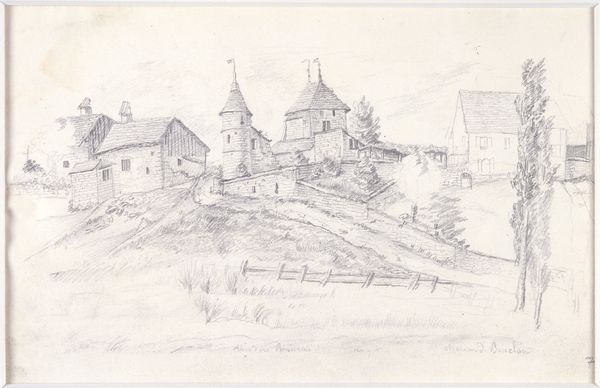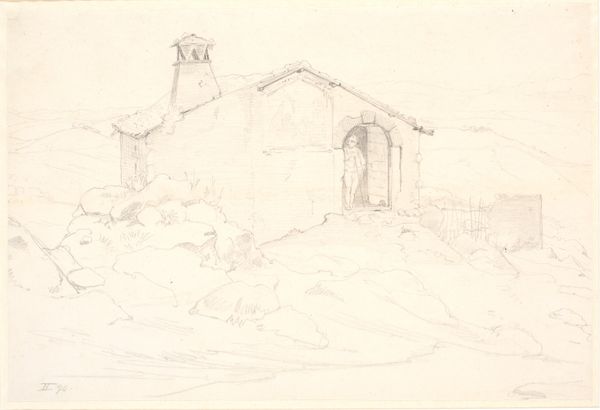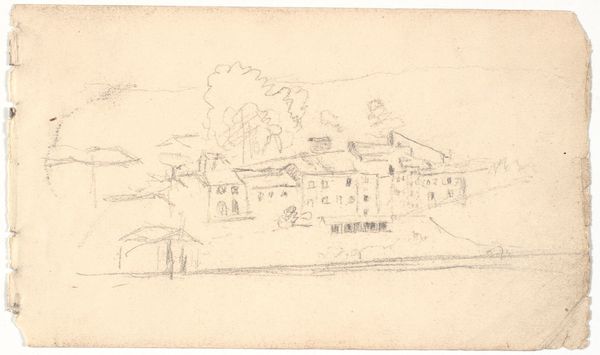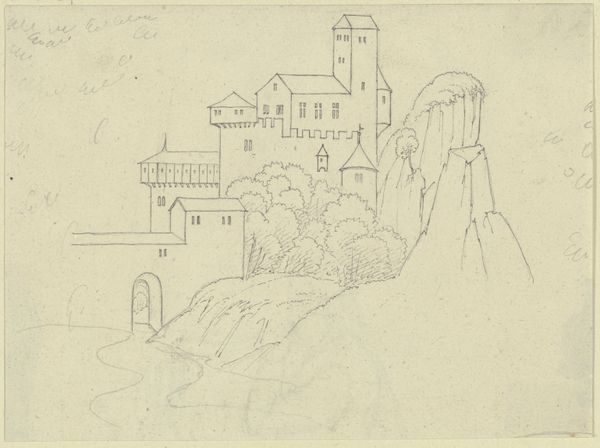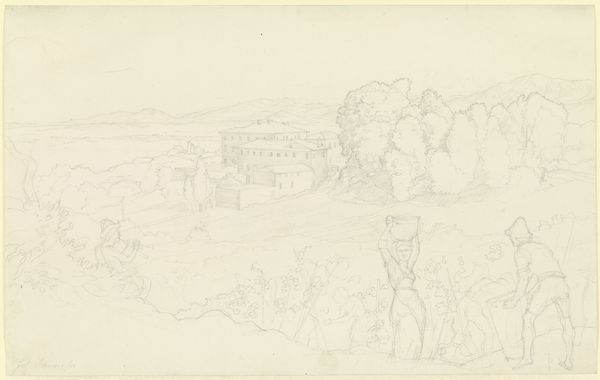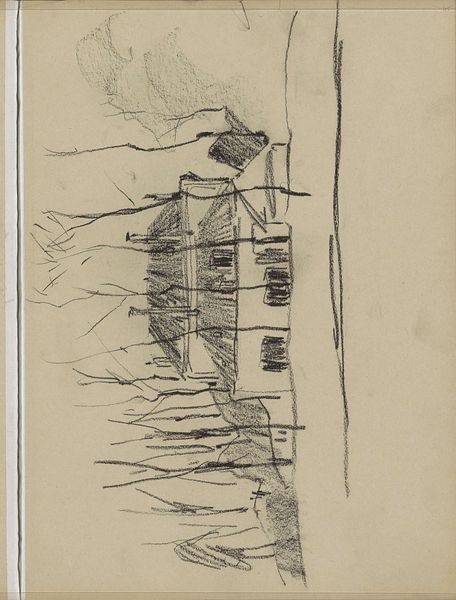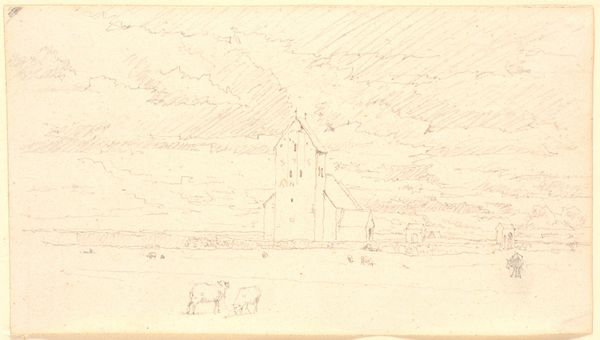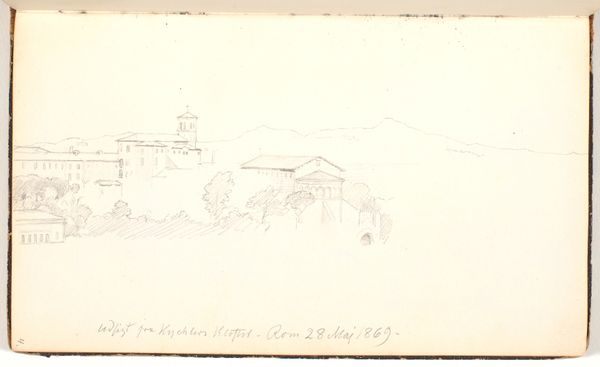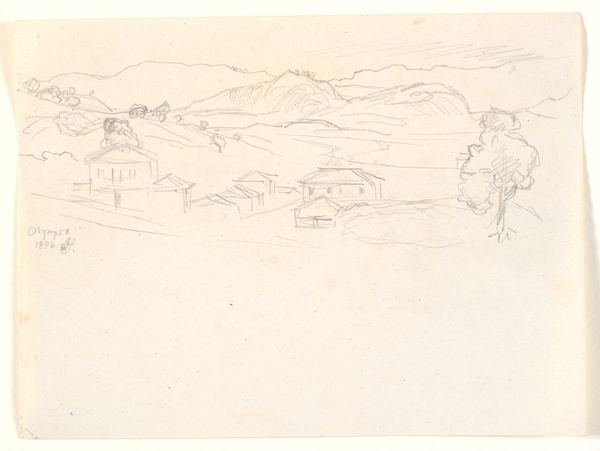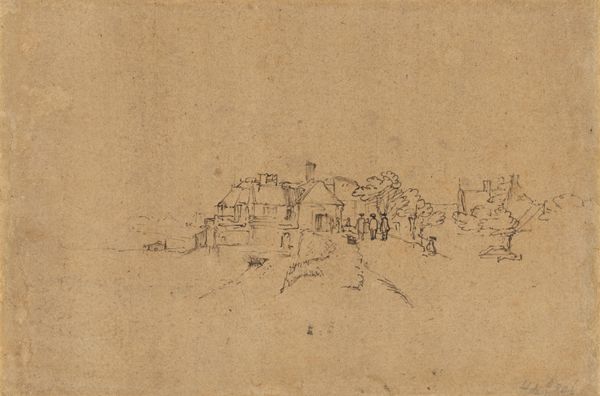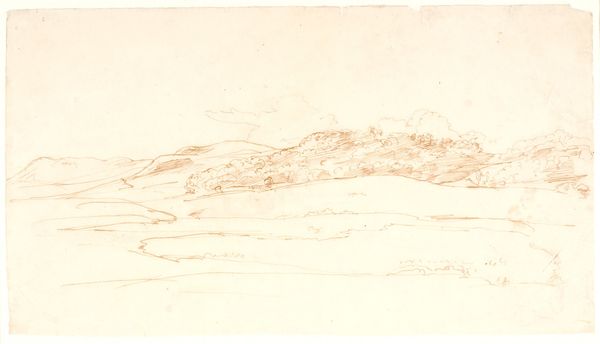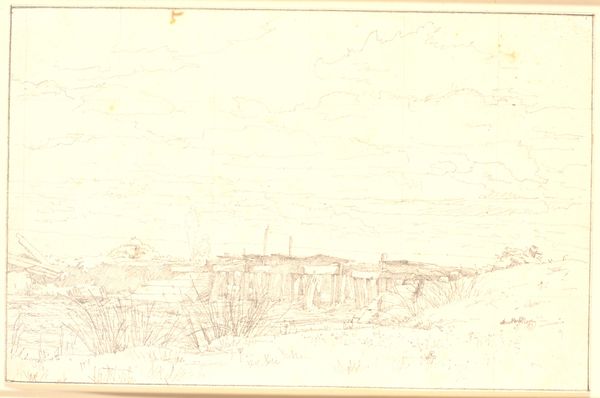
drawing, ink, pen
#
drawing
#
ink drawing
#
pen sketch
#
landscape
#
ink
#
romanticism
#
pen
#
cityscape
#
realism
Dimensions: 107 mm (height) x 220 mm (width) (bladmaal)
Curator: Before us is Martinus Rørbye's "Italiensk bjerglandskab med by," an ink drawing from 1837 housed here at the SMK. Editor: It’s delicately rendered. A serene landscape, yet somehow...unsettled? The pale ink creates a soft effect, but the lines are decisive. Curator: Rørbye, a key figure in Danish Golden Age painting, produced this while traveling in Italy. We must remember how that affected him as an artist in service to the state and his community. Italy represented a beacon of classical beauty and offered stark contrast to the more subdued Nordic light. Editor: True, and that juxtaposition informs much of Rørbye's aesthetic pursuits. I find it intriguing how the composition divides into distinct zones. The architecture, with its almost geometrical precision, anchored on a small hilltop, sharply contrasting against the nebulous horizon. The texture of the drawing emphasizes the material presence. Curator: Rørbye, along with other artists, embraced realism alongside Romanticism, carefully examining the topography and daily lives of the places he visited and presenting it as is. This particular work highlights the interplay of the Italian landscape. Think of the market life he might've experienced. Editor: Yes, the subject implies so, yet it almost functions as a diagram. Consider how the spire rises vertically and punctuates a skyline where form dissolves almost into absence. The application creates hierarchy, establishing that Italian architectural styles still held a sacred role within broader society. Curator: These quick landscape drawings served as crucial references for studio paintings back home. In Italy, this helped artists define their own position and roles within their respective governments and states through romantic, local interpretations of realism. Editor: Absolutely, that process makes a piece like this a record. But I find that it's more of an independent inquiry of form. Curator: His contribution allowed the public back home to view romantic landscape ideals. We were not there at that time to travel alongside Rørbye. Editor: Well, it is definitely rewarding to view Italian mountain landscapes now through his eyes.
Comments
No comments
Be the first to comment and join the conversation on the ultimate creative platform.
